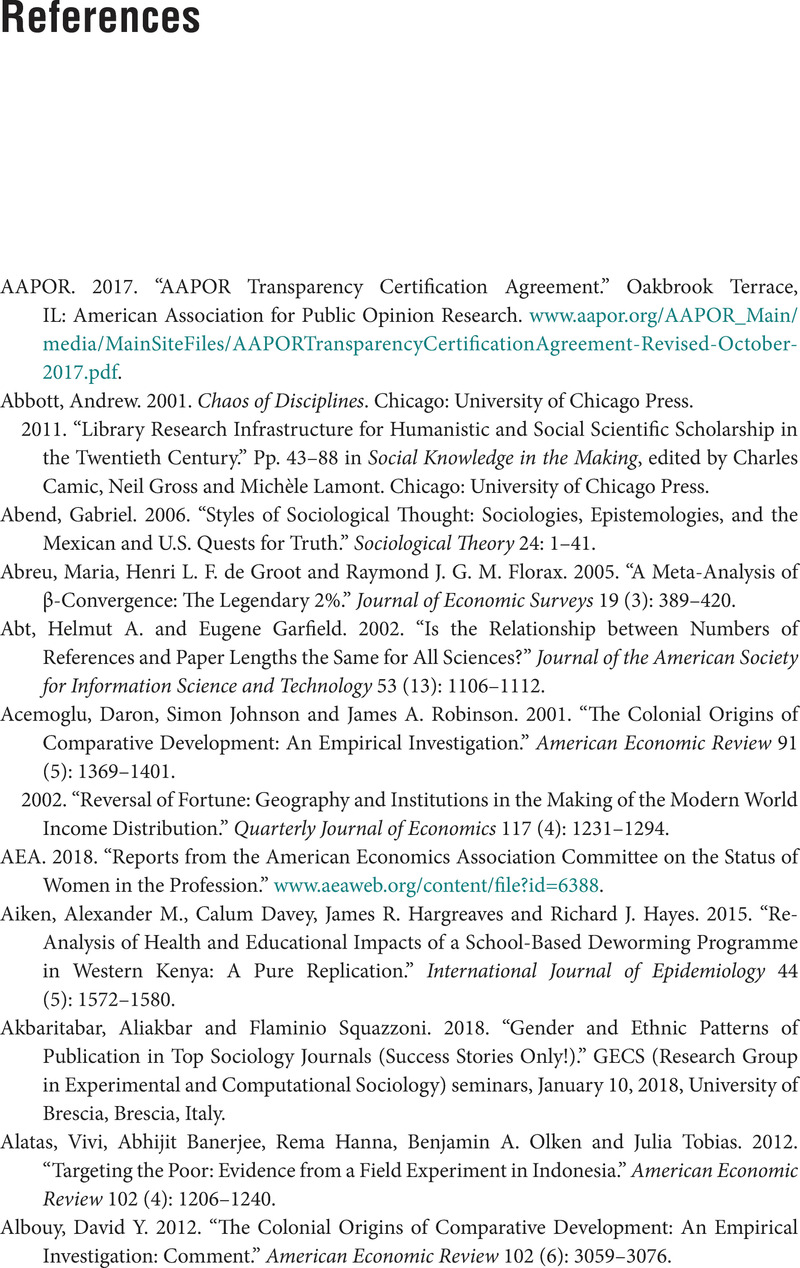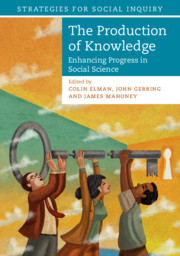Book contents
- The Production of Knowledge
- Strategies for Social Inquiry
- The Production of Knowledge
- Copyright page
- Contents
- Detailed Contents
- Figures
- Tables
- Contributors
- Acknowledgments
- 1 Introduction
- Part I Discovery
- Part II Publishing
- Part III Transparency and Reproducibility
- Part IV Appraisal
- Part V Diversity
- Part VI Conclusions
- References
- Index
- References
References
Published online by Cambridge University Press: 11 March 2020
- The Production of Knowledge
- Strategies for Social Inquiry
- The Production of Knowledge
- Copyright page
- Contents
- Detailed Contents
- Figures
- Tables
- Contributors
- Acknowledgments
- 1 Introduction
- Part I Discovery
- Part II Publishing
- Part III Transparency and Reproducibility
- Part IV Appraisal
- Part V Diversity
- Part VI Conclusions
- References
- Index
- References
Summary

- Type
- Chapter
- Information
- The Production of KnowledgeEnhancing Progress in Social Science, pp. 487 - 542Publisher: Cambridge University PressPrint publication year: 2020

